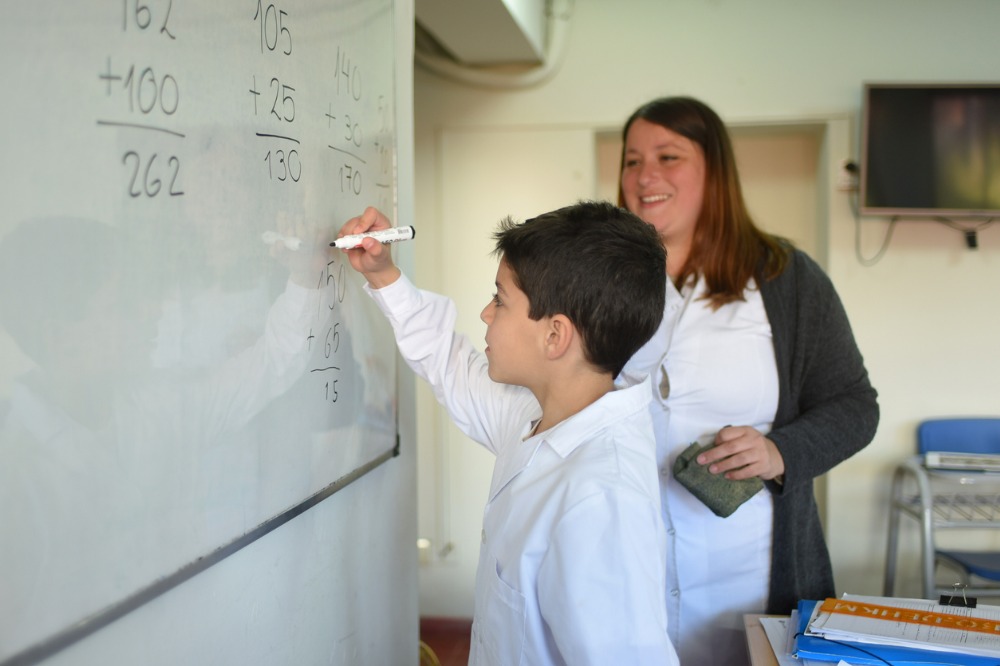
Maths teachers must use consistent high-quality practices if they want to lift student achievement, a new research paper says.
According to the research, published by the Centre for Independent Studies, maths teachers must use strategies that have been validated by multiple research studies “conducted in school-based settings, organised by different researchers across years, or even decades”.
“The practices dealt with in the paper – on maths language, multiple representations, systematic and explicit instruction, fluency and word problems – are crucial for mathematics instruction, particularly for students who experience difficulty,” the paper says.
“With average mathematics scores of students declining in Australia over the last two decades, research-validated practices must be common practice to arrest this.”
The research comes as Programme for International Student Assessment (PISA) data shows Australian students experiencing one of the world’s most significant and consistent declines in mathematics outcomes since international testing began.
The word-renowned researchers behind the latest study believe this is likely the result of teaching practices that do not always align with the best available evidence.
Dr Sarah Powell, Associate Professor at the University of Texas' Department of Special Education, said there are several real-world examples of how the adoption of research-validated math teaching practices improves students’ maths outcomes.
One of these, she says, was highlighted by Vanderbilt University research professor Lynn Fuchs and her colleagues in 2014, in which they had Grade 2 teachers use a program focused on word problems that incorporated several of the research-validated practices from the paper.
“[This included teaching [students] about word problems using an attack strategy and a focus on schemas, being systematic and explicit with instruction, and using representations,” Dr Powell told The Educator.
“At the end of the school year, students who participated in this program showed large gains over students in two other conditions, with the program students performing almost a standard deviation higher than other students.”
When asked what practical steps Australian principals can take to promote research-backed math instruction in light of declining math scores among students, Dr Powell said there are several considerations.
“First, spend time in classrooms observing mathematics instruction to understand what instruction looks like for students. Second, provide opportunities for teachers to learn, practice, and refine research-validated practices,” she said, adding that this might be through teacher workshops or professional learning communities.
“Third, consider whether teachers might need coaching. Coaches can observe and provide feedback to teachers, and coaches are an important component of all teacher training efforts.”
Teachers must review student data on a timely basis
When it comes to assessing students’ learning through the collection and utilisation of data, Dr Powell noted that instruction should always be paired with assessment.
“Administrators should ensure that every student in their school participates in mathematics screeners several times a year - usually at the beginning, middle, and end of the school year,” she said.
“This should occur at all grade levels - from preschool and kindergarten through secondary school.”
However, Dr Powell said collecting this data isn't enough.
“Administrators and teachers must review the data on a timely basis and consider whether students are on track to meet mathematics goals or whether they need additional support. This is particularly important at the beginning and middle of the year,” she said.
“When a student's data shows they are not expected to meet end-of-year goals, teachers need to make instructional adaptations to help get students back on track. Because mathematics learning is cumulative, we have to help students when they need help. We cannot wait to let students fail.”
Dr Powell said the practices outlined in the paper can be used in any curriculum or program, meaning they should not be that difficult to implement in the classroom.
“Teachers may want to learn more about how to effectively model mathematics and engage students in practice.”
Dr Powell said teachers may also need new materials for their classroom, particularly if they want to use different hands-on tools or virtual manipulatives to help students understand mathematics concepts and procedures.”
“One other challenge may be to lessen the use of practices that don't have a strong evidence base and replace those practices with this suite of research-validated practices.”
Sarah Powell will be appearing at a CIS event in Sydney in March to discuss the paper's findings.


